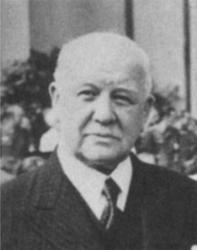Fin de Siècle#
Franz Lehár: Die lustige Witwe (The Merry Widow), ... Da geh ich ins Maxim!#
The works of Franz Lehár (1870 Komorn/Hungary - 1948 Bad Ischl/Upper Austria, Illustration) are always classified as light entertainment, although even as a young man, he studied the serious compositional techniques and used them innovatively. Far from any fin-de-siècle death wish, Lehár presented an alternative form of overcoming conflicts on the stage 30 years after the Fledermaus (cf. Johann Strauß Maxim's in the Operetta Die lustige Witwe (The Merry Widow) (1905). Lehár manages to combine the flamboyance of the opera with songlike melodies, whose refrains have become the hits of the operetta literature, and an orchestra accompaniment that supports the singers as they move the emotions of the audience. The historical interpretation from 1948 (Musical example) is a document of the typically viennese sound of the Schoenherr Orchestra. (M. Saary)
Sound Clip#
© 1948, ORF/Schönherr-Archiv, Interpreten: Johannes Heesters (Gesang), Großes Wiener Rundfunkorchester, Max Schönherr (Leitung)
